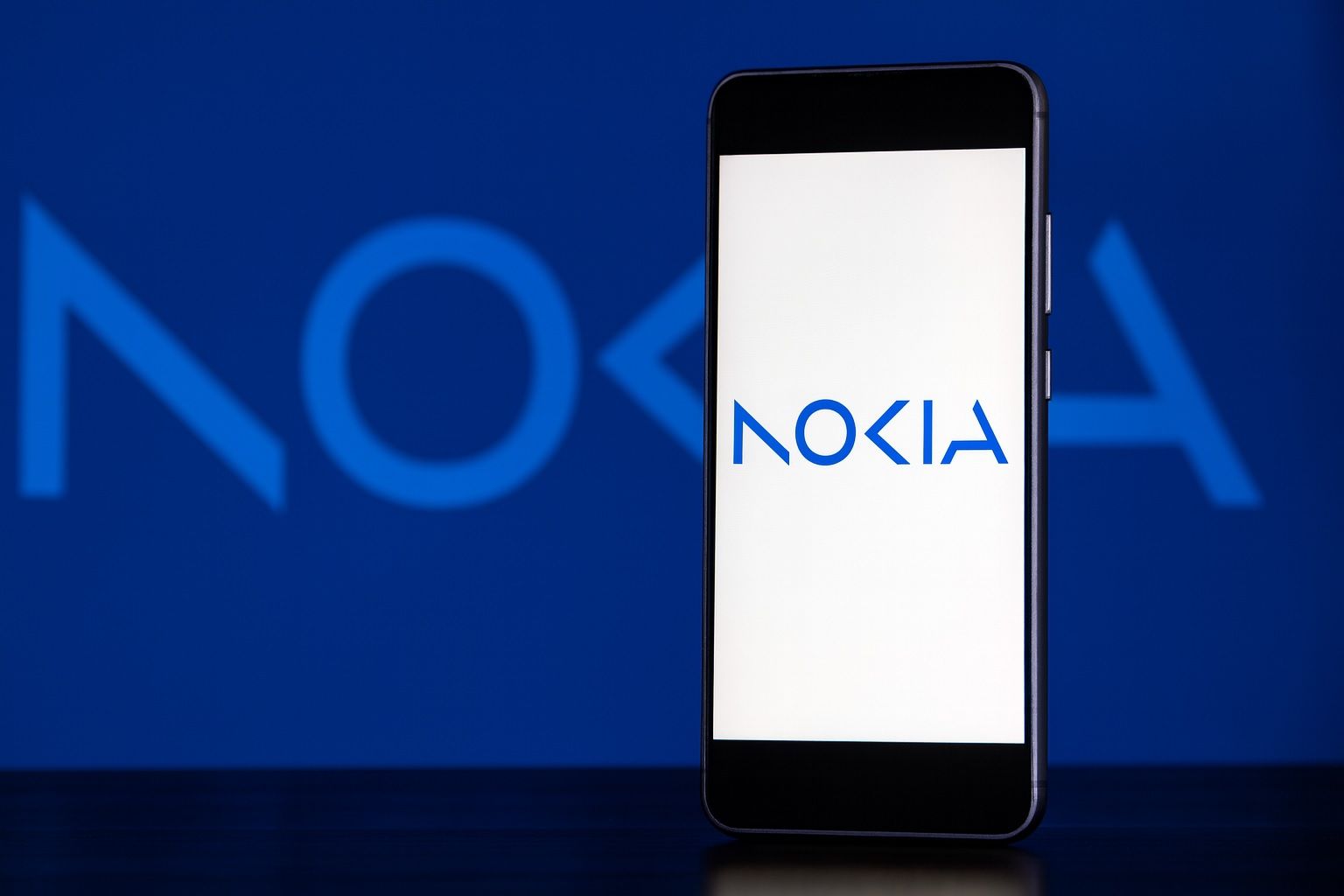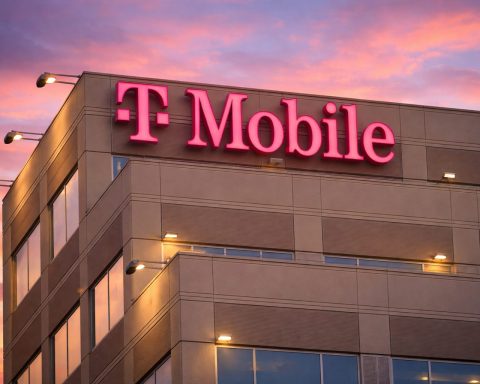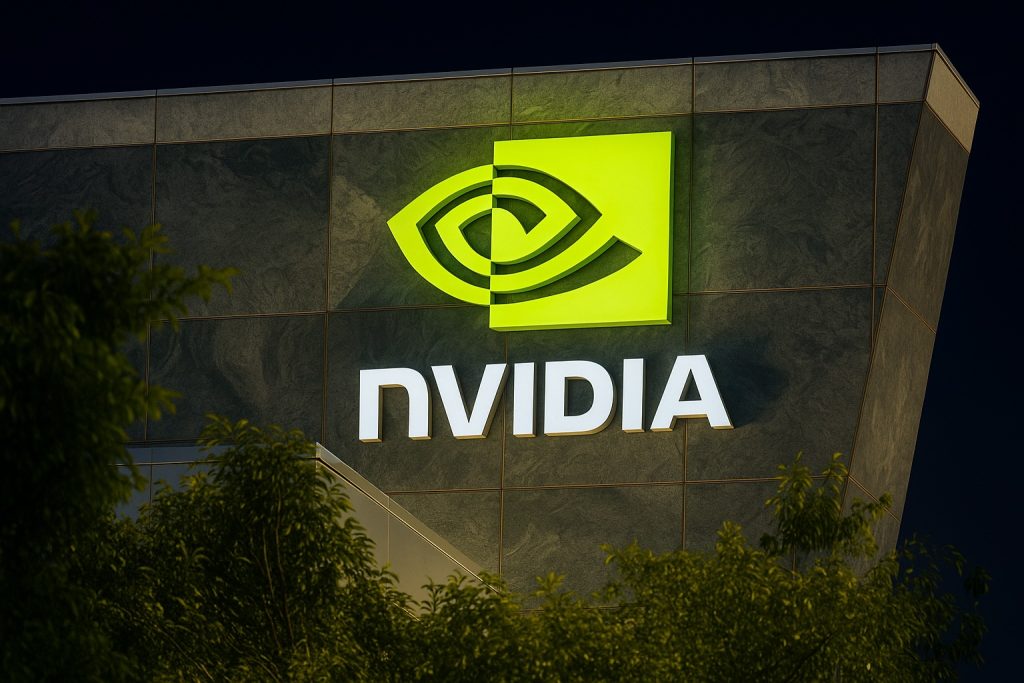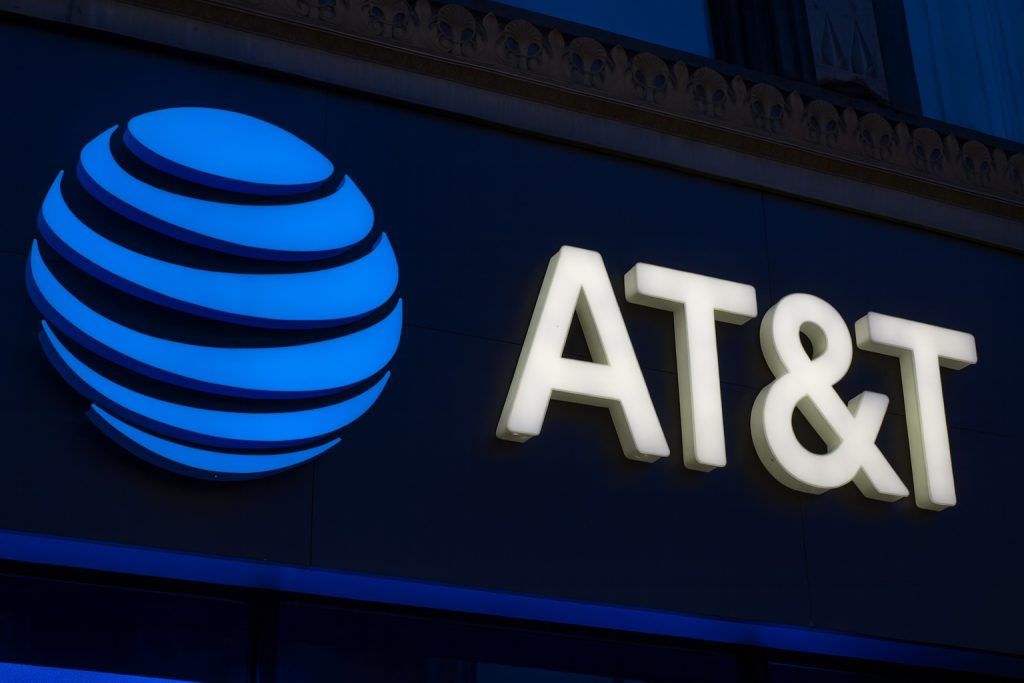- Surging Share Price: Nokia Oyj’s stock spiked ~10% on October 23 after a strong quarterly report, reaching about $6.10 in New York – its highest level in over three years [1]. Helsinki-listed shares jumped ~8% to roughly €5.20 [2], adding an estimated $3.5 billion to Nokia’s market value. As of midday Oct. 24, NOK trades near these highs (around $6.15 on NYSE; €5.30 in Helsinki).
- Earnings Beat & Raised Outlook:Q3 2025 results beat expectations. Nokia posted an operating profit of €435 million (vs ~€340 M expected) on €4.83 billion revenue (above ~€4.6 B forecast) [3]. Robust demand in optical networks and cloud services drove a 12% sales increase [4]. The company slightly raised its full-year profit guidance to €1.7–2.2 billion (from €1.6–2.1 B) amid the stronger results [5].
- 5G Deals Fuel Optimism: Nokia has landed major 5G contracts in recent weeks. It extended a 5G partnership with Vodafone/Vodacom in Europe and Africa and, alongside Ericsson, won a £2 billion (~$2.7 B) deal to upgrade ~7,000 sites for Vodafone’s new UK joint venture [6]. Nokia also clinched an energy-efficient 5G network project with Japan’s Rakuten and expanded a core network upgrade for Finland’s Elisa, showcasing momentum in multiple markets [7].
- Analyst Sentiment – Cautious Buy: Wall Street’s stance on Nokia is moderately bullish. A majority of analysts rate NOK a “Buy” with an average 12-month price target around $5.30–$5.50 [8]. That’s near the current price after the rally, suggesting modest upside ahead. Some analysts recently upgraded the stock (BNP Paribas to Outperform) [9], though others trimmed targets earlier this year (JPMorgan cut from $6.50 to $6.00) [10] [11]. Overall, consensus expects Nokia to improve gradually, barring any industry downturns.
- Strategic Shifts: Under new CEO Justin Hotard (at the helm since early 2025), Nokia is refocusing on future growth areas like cloud, AI, and defense communications. It completed a $2.3 billion acquisition of U.S. optical networking firm Infinera this year, bolstering its optical and data center tech portfolio [12]. Nokia is also embedding AI into its 5G systems (e.g. partnering with HPE on AI-powered network automation) [13] and eyeing opportunities in secure government and military networks amid rising defense budgets [14]. These moves aim to diversify Nokia beyond its traditional telecom gear business.
Stock Price and Recent Performance
Nokia’s stock (NYSE: NOK) has been on a tear in October, culminating in a sharp jump after its latest earnings. The U.S.-listed shares rallied over 10% in a single day on Oct. 23, surging to the mid-$6 range [15]. That price level hasn’t been seen since 2022, marking a multi-year high for the Finnish telecom giant. In Helsinki, Nokia’s share price similarly hit new highs above €5 [16]. This month-long uptrend was fueled by anticipation of strong results and a string of positive news. By mid-October, Nokia’s ADR had already climbed about 14% – touching ~$5.50 by Oct. 14 – on optimism about big 5G contract wins and bullish forecasts [17]. The better-than-expected earnings report then added an extra boost, carrying the stock to its current elevated levels.
Market participants note that Nokia’s rapid rise has made the stock technically “overbought” in the short term. Its 14-day RSI (Relative Strength Index) recently shot above 70, a level that often precedes near-term consolidation or pullbacks [18]. Indeed, after the initial post-earnings spike, Nokia’s shares may cool off or trade sideways as investors digest the gains. However, any dip so far has been shallow – a sign that dip-buyers remain confident in Nokia’s longer-term story. Even with the stock up ~60% from spring 2025 lows, Nokia’s market capitalization (around $35 billion) and valuation multiples are still seen as reasonable relative to industry peers [19]. The question is whether the company can maintain this positive momentum going forward.
Earnings Beat Expectations in Q3
Investors cheered Nokia’s third-quarter 2025 financial results, which emphatically beat analyst expectations on both top and bottom lines. The company’s comparable operating profit for Q3 was €435 million, easily surpassing consensus estimates in the low €300 millions [20] [21]. Revenue for the quarter came in at €4.83 billion, about 5% higher than forecasts (~€4.6 B) and up 12% year-on-year [22]. This strong performance was driven by surprisingly robust demand in Nokia’s Network Infrastructure division – especially optical networks, where sales jumped 19% vs. a year ago [23]. Higher orders from cloud and data center customers (many tied to AI buildouts) boosted Nokia’s fixed networks and optical revenues, offsetting more modest growth in its mobile networks unit [24] [25].
Nokia’s management highlighted that the surge in optical networking business was partly enabled by its recent integration of Infinera, a U.S. firm it acquired to strengthen high-capacity data center interconnect offerings [26]. “AI and data center demand continues to be robust… in fact, it continues to accelerate from our perspective,” Nokia CEO Justin Hotard noted, pointing out that cloud/AI clients now account for roughly 6% of Nokia’s sales [27]. The company’s pivot toward supporting AI infrastructure – from optical transport gear to advanced silicon for network routing – appears to be paying dividends.
Notably, Nokia’s profit margins ticked up slightly despite some currency headwinds. The Q3 comparable gross margin reached 44.2%, topping forecasts, and operating margin hit 9% (versus ~7.4% expected) [28]. This suggests Nokia managed costs well even as revenue grew. Earnings per share came in at €0.06 for the quarter, matching expectations [29]. Off the back of these results, Nokia’s leadership felt confident enough to raise full-year guidance – albeit modestly. The firm now projects €1.7–2.2 billion in 2025 operating profit, up from a prior €1.6–2.1 B range [30]. While the upgrade was minor (and partly due to an accounting change in how venture investments are counted), it marks an improvement from the profit warning Nokia issued back in July when it cut outlook amid U.S. tariffs, a weak dollar, and a North American 5G slowdown [31]. In short, Nokia’s latest quarter provided reassurance that those headwinds are being managed and that second-half 2025 is trending better than the first half.
Big 5G Contracts and Sector Developments
Another key factor boosting Nokia’s stock has been its recent wins in the 5G market. In the weeks leading up to earnings, Nokia announced several major contracts that not only promise future revenue streams but also signal that Nokia remains highly competitive in global telecom. For example, in mid-October Nokia unveiled an extension of its 5G partnership with Vodafone/Vodacom, covering network upgrades across Europe and Africa [32]. Around the same time, the newly formed Vodafone–Three UK joint venture (the product of a merger in Britain) awarded a £2 billion (~$2.7 billion) contract split between Nokia and Ericsson to supply 5G equipment for roughly 7,000 sites over the next decade [33] [34]. This was a particularly significant win for Nokia as it marks the company’s return as a supplier to Vodafone in the UK, providing radio access and core network gear for a large portion of the British 5G rollout [35]. Securing a chunk of this high-profile UK contract – alongside its Swedish rival – underscored that the two European vendors are still the vendors-of-choice in Western markets that are shunning Chinese telecom equipment.
Nokia has also notched 5G deals elsewhere. In Japan, it signed a contract with Rakuten Mobile to deploy a “green” 5G network using Nokia’s energy-efficient optical transport technology [36]. This project uses Nokia’s advanced DWDM (dense wavelength division) optical systems to cut network power consumption by around 24%, helping Rakuten lower costs and carbon footprint [37]. And in Nokia’s home country of Finland, the company expanded a multi-year core network upgrade deal with Elisa, aiming to integrate 5.5G capabilities and improve network energy efficiency by ~20% [38]. These contracts highlight Nokia’s strength not just in traditional wireless radio gear, but across the networking stack – from radio access to optical backhaul to core networks and software.
Beyond individual deals, Nokia is positioning itself for the next generation of telecom technology. It is already looking ahead to 6G: the company recently opened a 55,000 m² R&D and manufacturing campus in Oulu, Finland dedicated to developing “Europe-made” 5G/6G radio networks for the AI era [39] [40]. Nokia touts the site as one of the world’s most advanced radio labs, complete with a smart factory that will build both civilian and defense network equipment. In fact, Nokia is eyeing growth in defense communications as a new frontier. With many NATO-aligned countries ramping up defense spending (some targeting 3–5% of GDP on defense), there is rising demand for secure and hardened communication networks [41]. Nokia’s CEO has indicated the company sees opportunity here, leveraging its expertise in encrypted wireless, private networks, and industrial connectivity for military use cases [42]. The new Oulu 5G/6G campus even hosts a test center for NATO’s DIANA initiative (Defence Innovation Accelerator), reflecting the growing intersection of telecom tech and defense needs [43].
In the broader telecom sector, Nokia’s leadership believes the ongoing rollout of 5G (and eventually 6G) is a long-term tailwind, though with some caveats. Artificial intelligence is emerging as a major driver of network investment – as companies build data centers for AI, they need high-speed optical and 5G links, benefiting Nokia. “I fundamentally think we’re at the front end of an AI supercycle, much like the 1990s with the internet,” CEO Justin Hotard told Reuters [44], emphasizing that current AI-driven demand for networking gear could be a multi-year growth trend. At the same time, Nokia faces a bifurcated market geographically. In China, Nokia (and other Western vendors) have effectively been shut out of 5G deployments – Chinese carriers, under state policy, are favoring local suppliers Huawei and ZTE [45]. Conversely, in the U.S. and Europe, Huawei has been largely banned from 5G projects over security concerns, which in turn benefits Nokia and Ericsson [46]. This East/West split means Nokia and Ericsson dominate many 5G markets outside China, while Huawei dominates inside China. It also means Nokia must continue diversifying globally and innovating (e.g. preparing for 6G, investing in cloud and private networks) to stay ahead of shifting industry trends.
Competition and Strategic Moves
Nokia’s recent successes come amid intense competition in the telecom equipment arena. Its closest rival, Sweden’s Ericsson, has also been performing well and vying for many of the same 5G contracts. In fact, Ericsson reported blockbuster results in its own Q3 2025 report – including strong profit growth – which sent Ericsson’s stock up 13% in mid-October [47]. Ericsson has gained ground particularly in North America: notably, U.S. carrier AT&T has been phasing out Nokia’s 5G gear in favor of Ericsson after Ericsson snagged a massive $14 billion 5G expansion deal with AT&T back in 2023 [48] [49]. That loss was a blow to Nokia’s U.S. market share and contributed to the slower growth earlier this year. Both Nokia and Ericsson have also contended with telecom operators tightening spending in some regions and challenges like import tariffs. The upshot is a highly competitive landscape where each big contract is hard-fought – which made the recent UK VodafoneThree deal, split between Nokia and Ericsson, a welcome win for both European suppliers [50].
Nokia also faces competition from non-traditional angles. Technology giants and specialized startups are pushing into networking, and carriers are exploring new architectures (such as Open RAN and cloud-based networks) that could lower reliance on legacy vendors. Additionally, the rise of satellite communications and non-terrestrial networks could introduce new competition or partnership models. (For instance, companies like AST SpaceMobile are testing direct-to-cell satellite broadband, which might complement ground networks in remote areas – a trend Nokia is watching, though it’s not a major player in that segment yet.) Meanwhile, Huawei remains a formidable competitor technologically, even if geopolitical pressures limit its reach in Western markets. Industry experts note Huawei continues to innovate in 5G/6G and often undercuts competitors on price, which can pressure margins across the board [51] [52].
To stand out, Nokia is leaning on its broad portfolio and strategic refocus. Under CEO Justin Hotard’s leadership, the company has doubled down on diversifying beyond just mobile antennas. Its four main segments now span Mobile Networks (cell tower gear), Network Infrastructure (which includes optical and IP routing), Cloud and Network Services (software, core networks, private wireless), and Nokia Technologies (patent licensing). The Infinera acquisition is a prime example of Nokia’s strategy to invest in high-growth areas adjacent to its core – in this case, optical transport for cloud providers [53]. By integrating Infinera’s high-end optical products, Nokia can offer end-to-end networking solutions for data centers and telecom operators, tapping into the surge in data traffic from AI and cloud services. Nokia is also partnering with IT firms like HPE to infuse more automation and AI into network management, which helps carriers optimize their 5G/6G networks and reduce operating costs [54].
The company’s push into defense and government projects further illustrates its strategic moves. Nokia has signaled it’s willing to tailor its wireless and cloud technologies to military needs – for example, providing secure private 5G networks for defense communications [55]. This could become a lucrative niche as countries invest in network resilience and encrypted communications. “Analysts view Nokia’s performance as a clear signal that its investment in emerging technologies is paying off,” one industry report noted, adding that the focus on AI, cloud, and defense positions the company for sustainable long-term growth [56]. By branching into these areas, Nokia aims to offset the volatility of the traditional carrier equipment business and tap into higher-margin opportunities.
Analyst Commentary and Market Outlook
Following Nokia’s recent rally and upbeat news, market sentiment is improving but still mixed on how much upside remains. As mentioned, most analysts covering Nokia have a Buy or Overweight rating, yet the average price target is only in the mid-$5 range [57] – essentially where the stock trades now. This suggests that Wall Street, while encouraged by Nokia’s progress, isn’t forecasting explosive gains in the next year. According to MarketBeat data, five out of seven analysts have Buys on Nokia and the consensus 12-month target is about $5.32 [58]. For instance, BNP Paribas upgraded Nokia to Outperform in September with a $5.00 target [59] (which the stock has since surpassed), and Deutsche Bank reiterated a Buy rating in October [60]. Even JPMorgan – which lowered its price objective from $6.50 to $6.00 back in July amid Nokia’s mid-year struggles – kept an Overweight rating, indicating they still see value in the company [61]. In short, professional analysts largely agree Nokia is on the right track, but their price forecasts imply only moderate growth ahead, reflecting the reality of a competitive, low-margin telecom industry.
In the near term, some market watchers caution that Nokia’s stock might have run a bit ahead of fundamentals after the October spike. The stock’s current valuation is around 28× earnings, higher than its historical average (though still below many pure-tech peers) [62]. Technical indicators like the overbought RSI hint at a possible pullback or pause in the rally [63]. “Investor sentiment is cautiously upbeat due to the recent contract wins and cost-cutting initiatives, but full-year guidance cuts remind that output may lag until late 2025,” observed TechStock², noting that Nokia still has to prove its turnaround will yield faster growth [64]. In other words, Nokia’s transformation into an AI- and cloud-driven networks leader is underway, but skeptics want to see that translate into consistently higher revenues and margins before assigning a higher valuation.
Looking further out, the medium-term outlook for Nokia appears brighter if it can execute on its strategy. The company’s strong balance sheet (debt levels are modest, and it has a healthy net cash position) provides stability and resources for R&D, dividends, and selective acquisitions [65]. Shareholders also enjoy a dividend yield around 3%, which provides some return while they wait for growth [66]. Nokia’s ability to consistently meet or beat earnings estimates – which it has done about 75% of the time in recent years [67] – has built a measure of credibility on the Street. Bulls argue that with 5G still in roll-out mode globally and 6G on the horizon, Nokia stands to benefit as operators upgrade networks, especially given the reduced role of Huawei in many markets. Moreover, Nokia’s expansion into cloud services, private networks for enterprises, and defense could open new revenue streams that were not meaningful in the past.
All that said, the company’s margin improvement remains a key watch point. Nokia’s operating margin has been stuck in the mid-single digits [68], lagging some peers, and management is actively working to streamline operations and cut costs. The company even issued some new shares in October (a small equity raise to fund employee incentives and potential M&A) [69], underlining its focus on shoring up resources for strategic initiatives. If Nokia can successfully expand higher-margin businesses (like software, cloud, optical, and patent licensing) and keep a lid on expenses, it could see profitability climb. That, in turn, would likely encourage investors to re-rate the stock higher.
Bottom Line: Nokia has staged an impressive comeback in fall 2025, quelling many doubts after a tough start to the year. The combination of an earnings beat, high-profile 5G contract wins, and a clear strategy in new tech domains has put the iconic Finnish company’s stock back on investors’ radar. In the short run, the stock may take a breather after its big run-up – but longer-term, Nokia’s bets on 5G, 6G, cloud, and defense could well set the stage for a sustained revival. As one analyst put it, Nokia is “turning the corner” but now must “show me” that these wins will translate into accelerating growth through 2026 [70]. If it can deliver on that promise, Nokia’s current share price highs might just be a stepping stone to further gains. Otherwise, the road ahead could become as challenging as the fiercely competitive telecom market it operates in. Investors and industry watchers will be closely following Nokia’s next moves – but for now, the company has given them plenty of reason for optimism.
Sources: Recent reports from TS2 [71] [72], Reuters [73] [74], Investing.com [75], CoinCentral [76], and MarketBeat [77].
References
1. www.mexc.com, 2. www.mexc.com, 3. ts2.tech, 4. ts2.tech, 5. www.investing.com, 6. ts2.tech, 7. ts2.tech, 8. ts2.tech, 9. ts2.tech, 10. www.marketbeat.com, 11. www.marketbeat.com, 12. ts2.tech, 13. ts2.tech, 14. ts2.tech, 15. www.mexc.com, 16. www.mexc.com, 17. ts2.tech, 18. ts2.tech, 19. ts2.tech, 20. www.investing.com, 21. www.mexc.com, 22. ts2.tech, 23. www.investing.com, 24. www.investing.com, 25. www.reuters.com, 26. www.reuters.com, 27. www.reuters.com, 28. www.investing.com, 29. www.investing.com, 30. www.investing.com, 31. ts2.tech, 32. ts2.tech, 33. ts2.tech, 34. www.reuters.com, 35. www.reuters.com, 36. ts2.tech, 37. ts2.tech, 38. ts2.tech, 39. www.rcrwireless.com, 40. www.rcrwireless.com, 41. ts2.tech, 42. ts2.tech, 43. www.rcrwireless.com, 44. www.reuters.com, 45. ts2.tech, 46. ts2.tech, 47. ts2.tech, 48. ts2.tech, 49. www.mexc.com, 50. ts2.tech, 51. ts2.tech, 52. ts2.tech, 53. ts2.tech, 54. ts2.tech, 55. ts2.tech, 56. www.mexc.com, 57. ts2.tech, 58. www.marketbeat.com, 59. www.marketbeat.com, 60. www.marketbeat.com, 61. www.marketbeat.com, 62. ts2.tech, 63. ts2.tech, 64. ts2.tech, 65. ts2.tech, 66. ts2.tech, 67. ts2.tech, 68. ts2.tech, 69. ts2.tech, 70. ts2.tech, 71. ts2.tech, 72. ts2.tech, 73. www.reuters.com, 74. www.reuters.com, 75. www.investing.com, 76. www.mexc.com, 77. www.marketbeat.com







